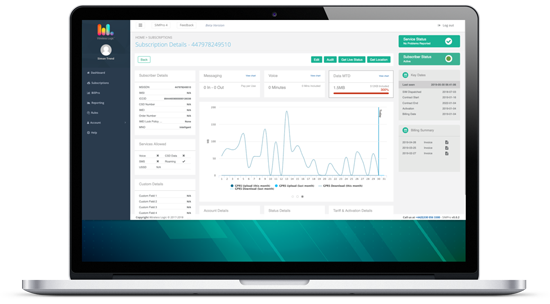LPWAN IoT for devices that require extended battery life
Mobile network operators across the globe are building out highly secure and standards-based low power cellular networks to support massive deployments of smaller, energy-efficient sensor devices. LPWAN for IoT is commonly found in Smart City, Healthcare, Agriculture, Transportation, Energy and Utilities and Environmental markets.
LPWAN enables longer battery life and removes the need for thermal management in devices. Combining that with smaller geometry SIM technology helps with miniaturisation and the reduction of device hardware costs. NB-IoT, LTE Cat-M and LTE Cat-1 all have distinct advantages.
Which technology is right for your application depends on a range of factors ranging from battery-life to time-to-market and total cost of ownership.
LPWAN explained
Hear from Chris Williams who explains the benefits and different low power technologies available for sensor applications deployed at massive scale and require longer battery life.

Battery efficient
NB-IoT and LTE-M will provide the most energy efficient solution for applications that are battery or solar powered.

Cost effective
Lower hardware costs and longer battery life make LPWAN technologies a cost-effective wireless solution for devices.

Signal Penetration
NB-IoT and LTE-M operate in lower frequency bands and perform better for indoor or under-ground deployments.

Mobile & Stationary
LTE-M and LTE Cat-1 support cell roaming making them better for mobile applications. Cat-1 is more globally available.
Considerations for selecting the best LPWAN technology

Local Deployments
If deploying in cities or regions then NB-IoT or LTE-M have the edge based on hardware costs and battery-life.
Battery-life
If a 7-10 year battery life is really required, then NB-IoT or LTE-M are the best options but if not, LTE Cat 1 has clear advantages.
Fragmented Coverage
NB-IoT and LTE-M both have fragmented coverage around the globe. In contrast, LTE Cat-1 is supported by all standard 4G networks.
Only a single network per country
With NB-IoT and LTE-M there is typically only a single network in most countries. With LTE Cat-1 there are multiple networks per country.
Total Cost of Ownership
The current NB-IoT and LTE-M landscape means there are limits on resilience and coverage which might mean a different SIM per country is needed. This can result in additional costs and management overheads. In contrast, LTE Cat 1 is a more universal solution.
eSIM/iSIM Compatibility
NB-IoT isn’t compatible with standard eSIM implementations. LTE-M and LTE Cat-1 are the best options if remote SIM provisioning is required. LTE Cat-1 provides greatest coverage and resilience.
SIMPro - IoT's most powerful Connectivity Management Platform
Our Connectivity management platform provides a single window to securely manage IoT assets across any network and any number of deployments.
![]() Deploy and manage assets quickly and easily
Deploy and manage assets quickly and easily
![]() Optimise costs and pre-empt issues through powerful insights
Optimise costs and pre-empt issues through powerful insights
![]() Real-time help and support
Real-time help and support
 Automate your connectivity using our powerful APIs
Automate your connectivity using our powerful APIs
![]() Unified and flexible billing for all business structures
Unified and flexible billing for all business structures

Your next step…
Click here to arrange a call with one of our IoT Connectivity Solution experts.
Call us on 0330 056 3300